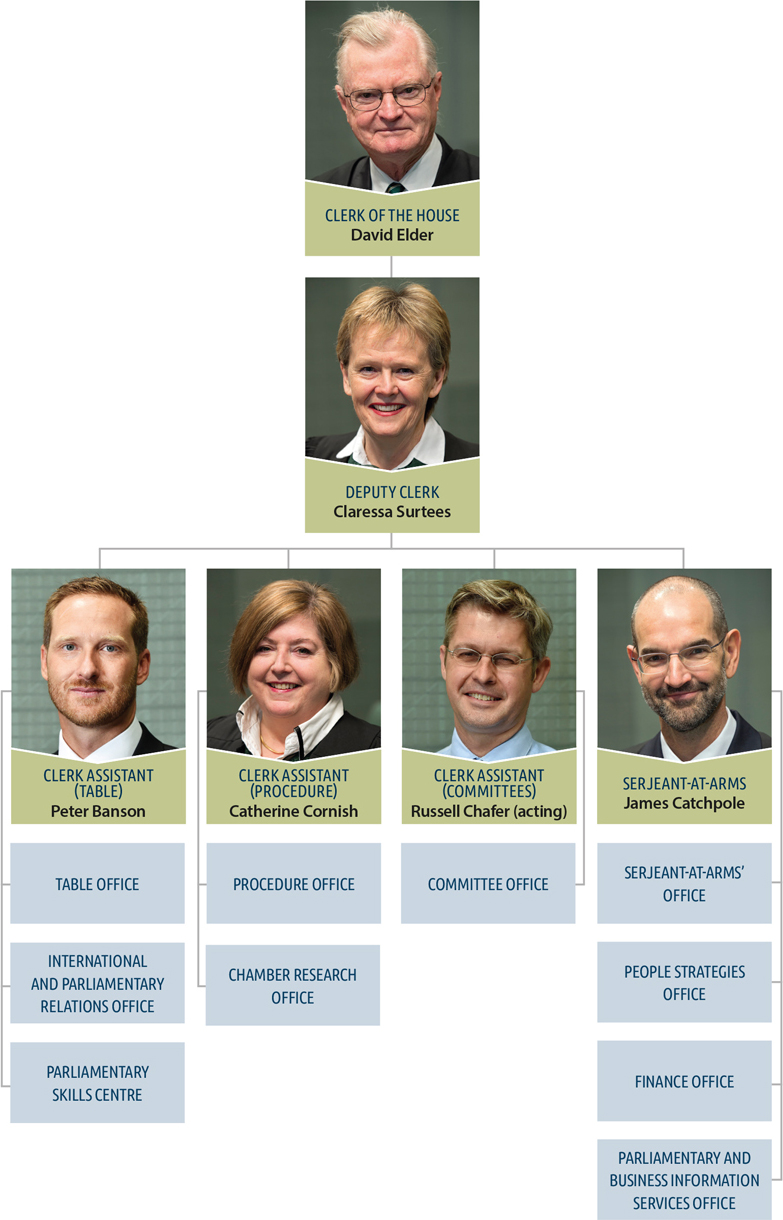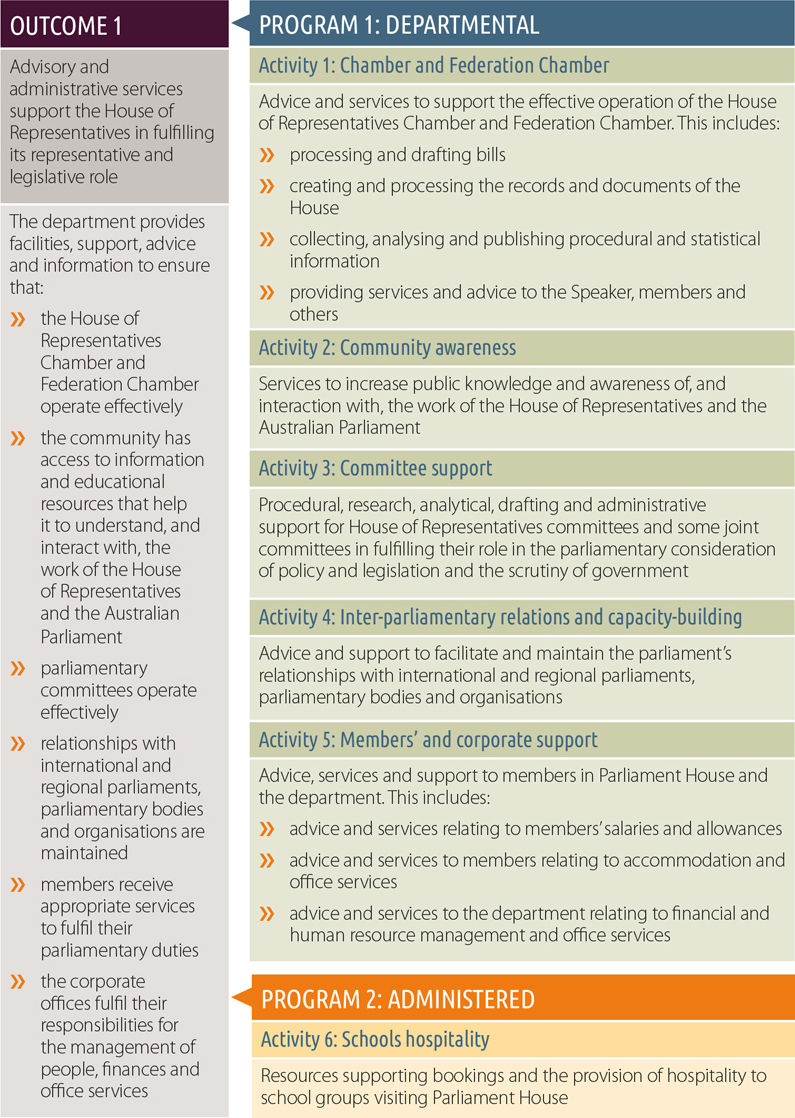Purpose
The department’s purpose as set out in its 2016–17 corporate plan is:
To support the House of Representatives, and the wider Parliament, in the role of a representative and legislative body by providing expert advice and services of a high standard.
Role and functions
The Parliamentary Service Act 1999 provides for a non-partisan parliamentary service to serve the Australian Parliament. The Department of the House of Representatives is established by and operates under the Act, together with three other parliamentary departments: the Department of the Senate, the Department of Parliamentary Services (DPS) and the Parliamentary Budget Office (PBO).
During 2016–17, the department continued in its role as a service department for the parliament, supporting the work of the House of Representatives, its members and committees, and some joint committees (comprising members of both the House and the Senate).
The department continued to provide services to increase public knowledge and awareness of the work of the House and the Australian Parliament and to encourage interaction. The department also assisted the House and the parliament in maintaining institutional relationships with their state, territory and international counterparts.
Departmental structure
The department is managed by its Executive: the Clerk, Deputy Clerk, Clerk Assistant (Table), Clerk Assistant (Procedure), Clerk Assistant (Committees) and Serjeant-at-Arms.
Two changes were made to the department’s organisational structure during the year. In December 2016, to support an enhanced focus on parliamentary procedural capacity-building for members and departmental staff, the Clerk approved an additional Senior Executive Service Band 1 position for a designated Clerk Assistant (Procedure). The position is established for an 18-month period, and the Clerk Assistant (Procedure) assumed responsibility for the Procedure Office and the Chamber Research Office. The Chamber Research Office previously reported to the Clerk Assistant (Table).
The second change was the Parliamentary Skills Centre’s co-location with the International and Parliamentary Relations Office, which consolidated the department’s support for international parliamentary engagement and parliamentary capacity-building. The two areas are now under the same director and report to the Clerk Assistant (Table).
Figure 1 shows the department’s organisational structure at 30 June 2017.
Figure 1 Departmental structure at 30 June 2017

Roles and responsibilities of the Executive
Clerk
The Clerk is the most senior official of the department. The Clerk is the principal adviser to the Speaker, and is responsible for leading 153 departmental staff members who provide administrative and procedural advice to the House, its committees and its international and domestic liaison services.
Deputy Clerk
The Deputy Clerk is the second most senior official of the department. The Deputy Clerk is responsible for advising and assisting members, their staff and departmental staff on matters of parliamentary practice and law, and for overseeing the drafting of private members’ bills and amendments. The Deputy Clerk assists the Clerk in managing the department and during the Clerk’s absence performs the duties of Clerk.
Clerk Assistant (Table)
The Clerk Assistant (Table) is responsible for the areas of the department that provide programming, procedural and legislative support to the Chamber and Federation Chamber of the House. The Clerk Assistant (Table) is also responsible for the areas of the department that support the parliament’s program of international delegations and parliamentary strengthening.
Clerk Assistant (Procedure)
The Clerk Assistant (Procedure) is responsible for the Procedure Office and the Chamber Research Office. Those offices provide procedural research and publications on the work of the House and its institutional role. The Clerk Assistant (Procedure) also contributes to the House’s parliamentary strengthening activities related to parliamentary procedure.
Clerk Assistant (Committees)
The Clerk Assistant (Committees) is responsible for the Committee Office, which provides a range of support services to House committees and to some joint committees.
Serjeant-at-Arms
The Serjeant-at-Arms is responsible for the corporate areas of the department, which provide support and a range of services for members and for departmental staff. The Serjeant-at-Arms has a key role in managing security matters relating to the House.
Outcome and program structure
The department’s outcome and program structure for the year is set out in the 2016–17 Portfolio Budget Statements.
The department has one outcome:
Advisory and administrative services support the House of Representatives to fulfil its representative and legislative role.
The department has two programs:
- Program 1: Departmental—supports five activities
- Program 2: Administered—supports one activity.
Figure 2 shows the department’s outcome and program structure and the activities under each program.
Figure 2 Outcome and program structure, 2016–17

Previous Page | Contents | Next Page